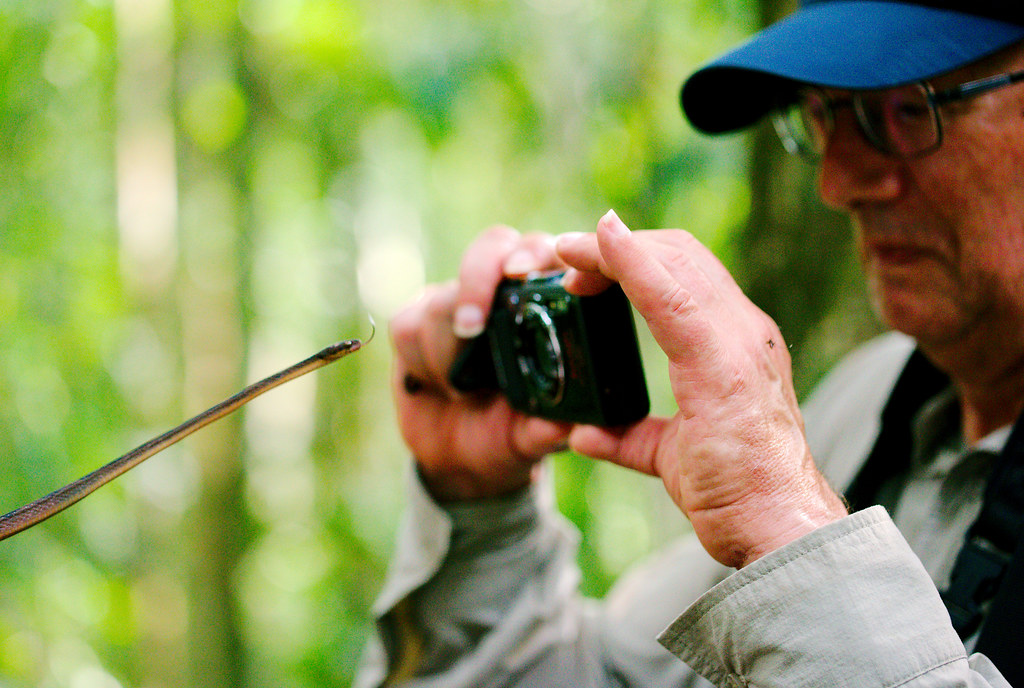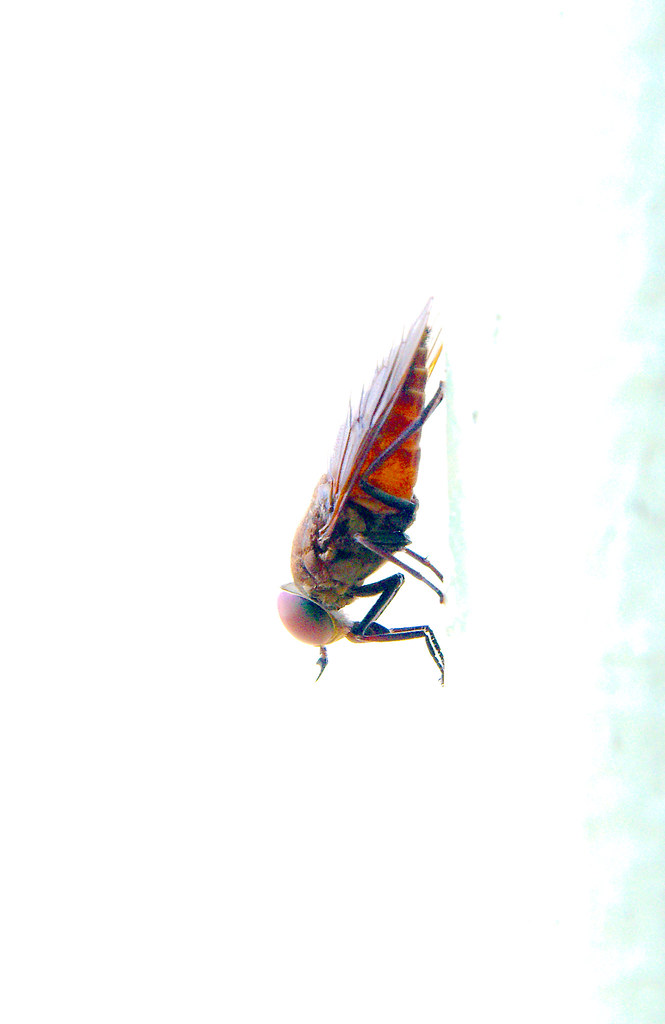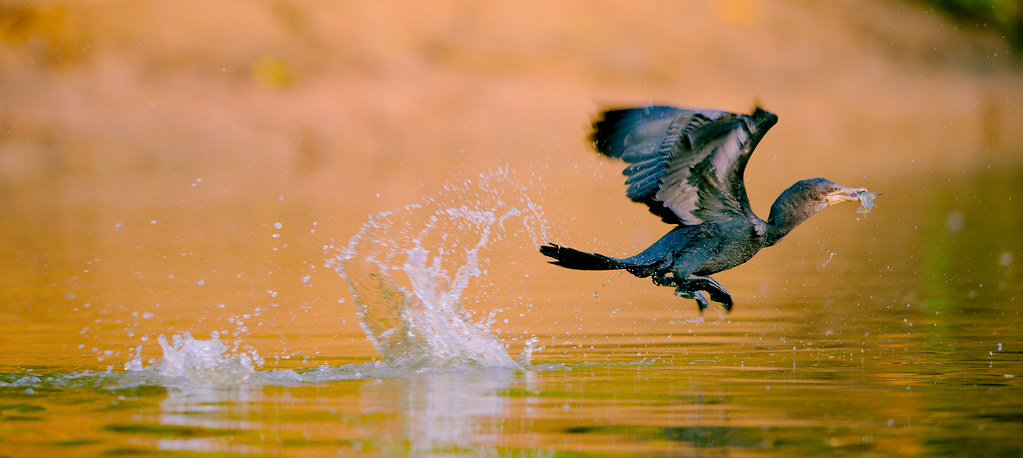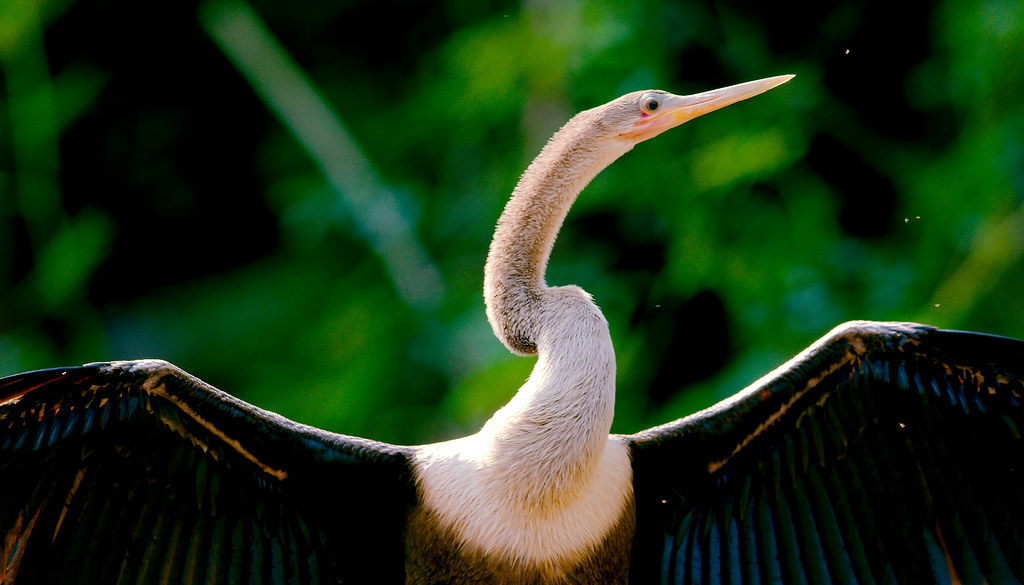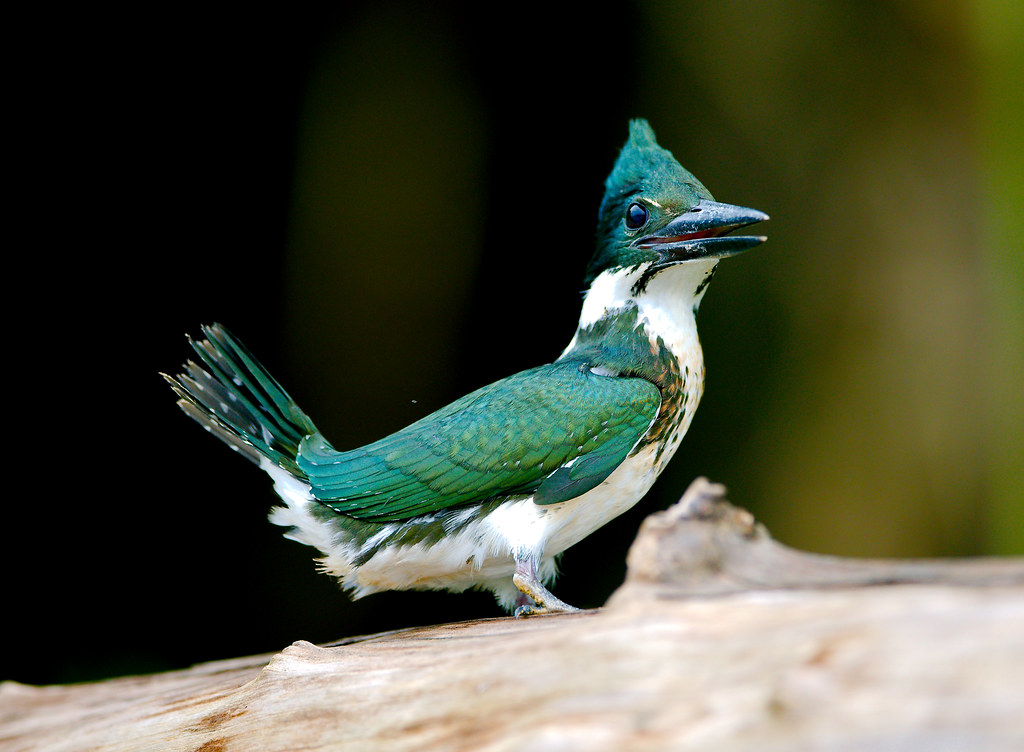Snakes have *really* strong muscles. Here, it was being held by the tail by a local guide and it took exception to the gentleman with the camera. It moved a little quick for my focus, but I think the shot is decent nonetheless.
Ridleys Beauty Snake (Orthriophis taeniurus ridleyi)
Siamese Crocodile (Crocodylus siamensis)
Cocoi Heron (Ardea cocoi)
Lion (Panthera Leo)
Monkey Monday
Siamese Crocodile (Crocodylus siamensis)
Peru 2015 – Fly
Prairie Dog performing Midsummer’s Night Dream
Hawk Headed Parrot (Deroptyus accipitrinus)
This is a hawk headed parrot eating a strawberry. Of course, the parrot doesn’t really have a hawk’s head. Accipitriformes and psittaciformes are two entire different orders of birds. Birds, of course, aren’t really birds. They’re avian dinosaurs. The word “dinosaur”, being coined in 1842 to mean “fearfully-great lizard”, of which the animals we call dinosaurs were most definitely not, at least on the “lizard” part. How great they were is rather subjective.
Also, a strawberry isn’t really a berry. It is an aggregate accessory fruit.
This post* brought to you by the English language.
* We now call a stream of electrons that make up words and/or pictures “posts” after the large wooden things we used to put into the ground for people to nail paper to. Thank you, linguistic evolution**.
** The word, “evolution”, of course coming from Latin and French, referring both to military maneuvers and the act of unrolling a scroll***.
*** Which, when unrolled, were sometimes nailed to posts*.
Peru 2015 – Cormant
California Kingsnake (Lampropeltis getula californiae)
Mimic Poison Frog (Ranitomeya imitator)
Peru 2015 – Anhinga
Agama
OK. This one is going to take a bit of explanation.
The Cheyenne Mountain Zoo is located in the mountains outside of Colorado Springs. In the Western US, there has been a tendency for people to treat all snakes as if they were venomous and to treat all reptiles as if they were snakes. So there is a lot of unnecessary killing.
So the zoo decided to take a very different approach in their reptile house. The entire thing is set up like an artist’s loft, with the reptiles in terrariums chosen to complement their colours and textures. The idea is that by getting people to view them outside of the normal environment, people will see them as something that is interesting and beautiful, not scary.
The cost of this approach, of course, is that they are objectifying the animals, potentially making them something less than a living creature (depending on one’s perspective). There is also an argument that not being kept in a natural environment will harm them somehow. However, many of the reptile keepers I’ve spoken with suggest that our desire to see reptiles in “natural exhibits” is us forcing a mammal-centric perspective upon species to which it does not apply.
After thinking on the issue for a while, I don’t think I would feel comfortable running a reptile house in the same way, but I can appreciate the aesthetics of the approach and the animals do not seem to have been harmed.
And, in the end, the pictures are rather striking.
